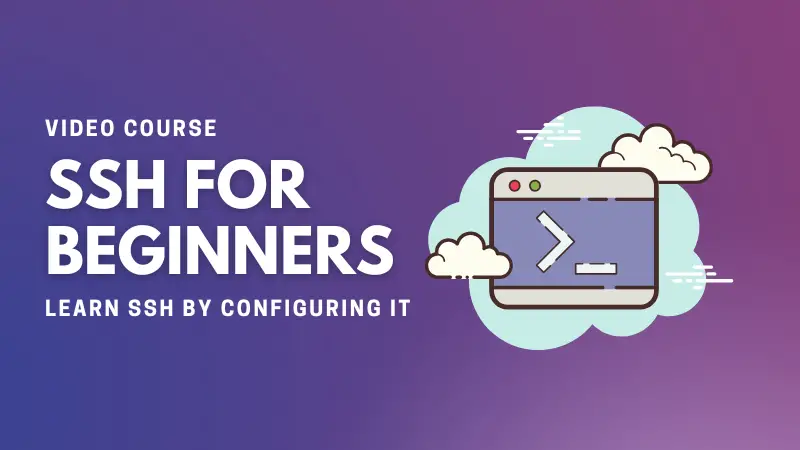SSH Fundamentals
Sun, 17 Aug 2025 18:23:30 +0530

SSH has become a must know tool for sysadmins and developers alike. Often, your production or test server is in a remote location and then you have to use the ssh command to connect to the remote server from your local system. And then you run and execute commands on the remote server from your local machine through the SSH connection.
This is an absolute beginner's course for Linux beginners, sysadmin beginners, network admin beginners, software developers, or anyone who wants to use SSH. The course assumes that you have no previous knowledge of SSH, terminal, or Linux commands.
⏳ Time to complete: Approx. 4 hours
📋 Prerequisite: None
📹 Type: Primarily video course
What will you learn?
In this crash course on Linux commands, you'll learn the following:
- What is SSH and why you should use it
- Set up a lab environment with VirtualBox
- Use SSH between two systems
- Basic Linux commands
- Basic text editing in the terminal
- Configure key based authentication
- Best practices to secure SSH
- Copy files between remote systems with SCP
- Maintain continuous SSH connection using screen or nohup commands
Prerequisite
There is no requirement as such. You should know how to use a computer at least.
The course presumes that you are an absolute beginner to SSH and Linux commands. But you can still use it to brush up the basics if you have forgotten your ways around SSH.
Who is your instructor?
Ted LeRoy

An Enterprise Security Architect, Ted has been providing a variety of information and physical security guidance to businesses. He is also a best-selling online instructor specializing in technology related courses. He has over 20 years in Information Technology and experience in Windows and Linux administration, web server and email administration, and network and firewall administration with Cisco, Juniper, and pfSense devices.
How to use this course?
You can simply watch the videos to see things in action.
Although, it is highly recommend that you follow the instructions and steps on your own system. That will be the best approach here.
The course also contains text. So if you have to revise the lessons, you can quickly go through the text instead of going through the video again.
The course is divided into chapters. The chapters of the series are always visible in the left sidebar and you can easily switch between them. The sub-sections of a chapter are located in the right sidebar.
The next and previous chapter navigation are also present at the bottom of each chapter.
For any doubts, you can always use the comment section available under each chapter.
Let's start learning SSH!
Recommended Comments